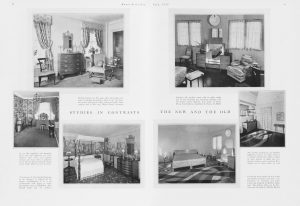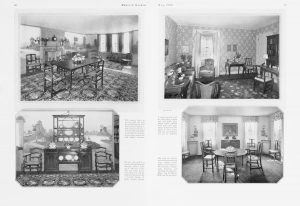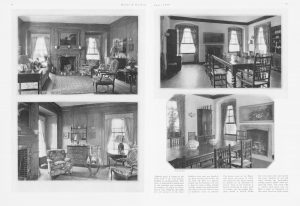


Although people may associate the “Roaring Twenties” with the glamour of Art Deco, modernist design was not the dominant style of the period. Historical styles such as Colonial Revival, regarded as a conventional means of expressing good taste and asserting traditional values, defined the American mainstream. Save for Elaine Wormser’s modern bedroom, the Wormsers decorated their Drake Tower apartment in styles referencing the past using eighteenth-century English antiques and historical reproductions. The family’s interest in trying out the modern style for Elaine’s bedroom indicates their progressive tastes and perhaps the forward-thinking values they hoped to instill in their daughter.